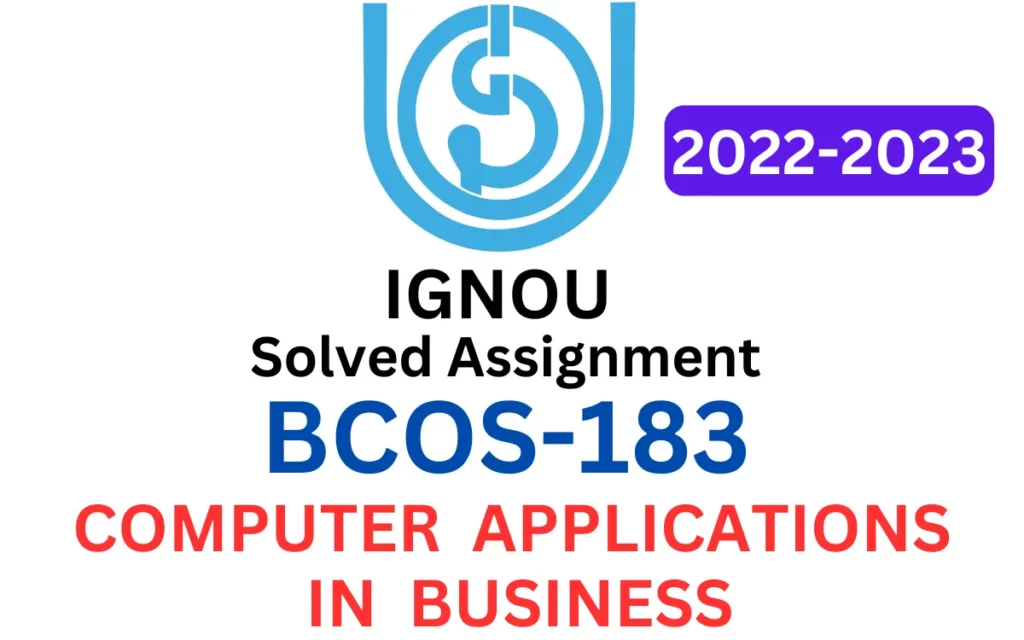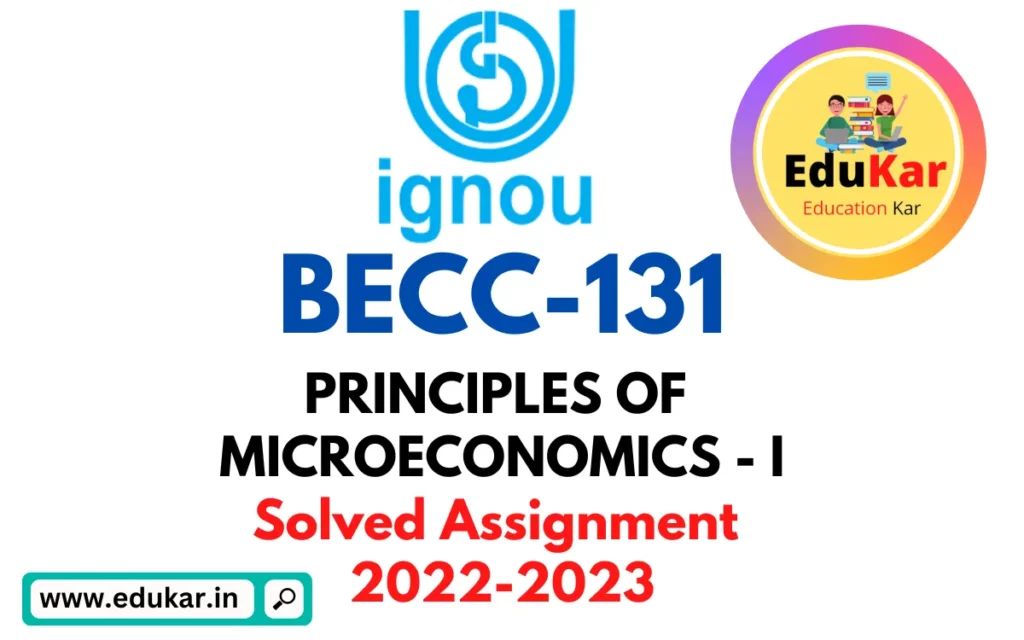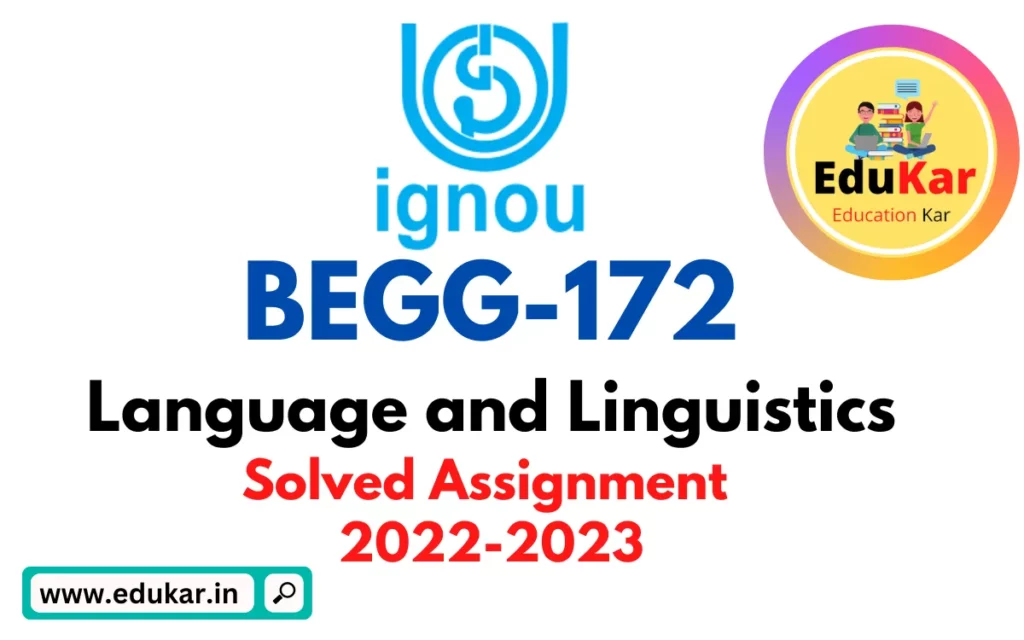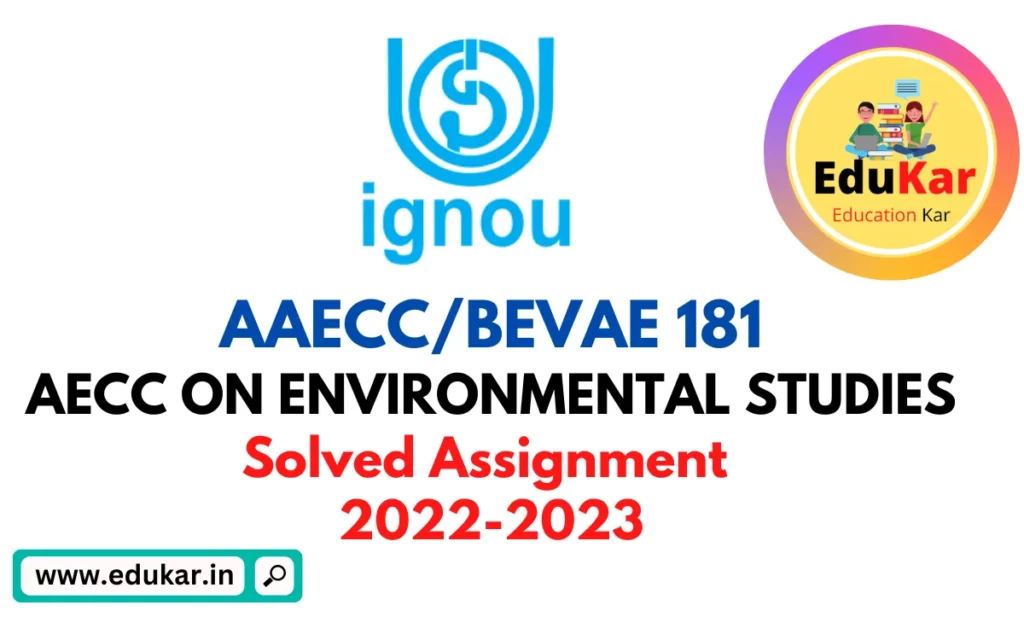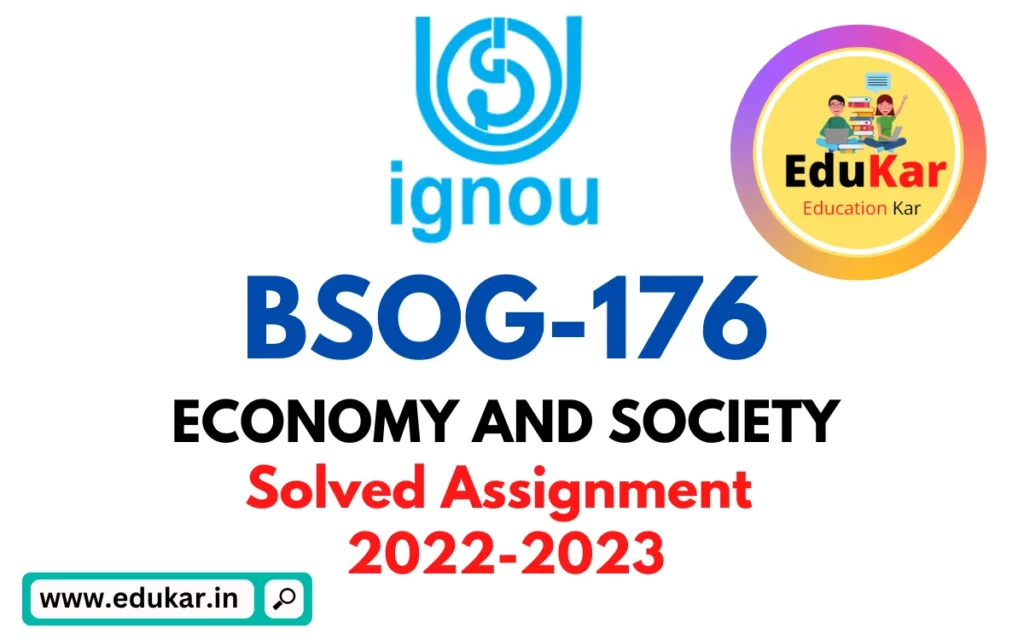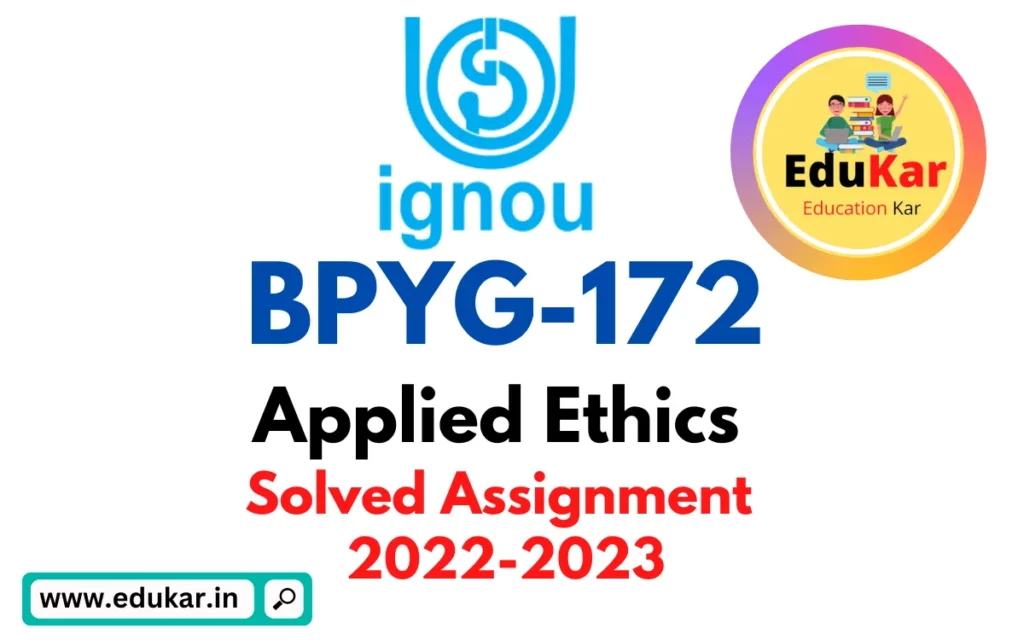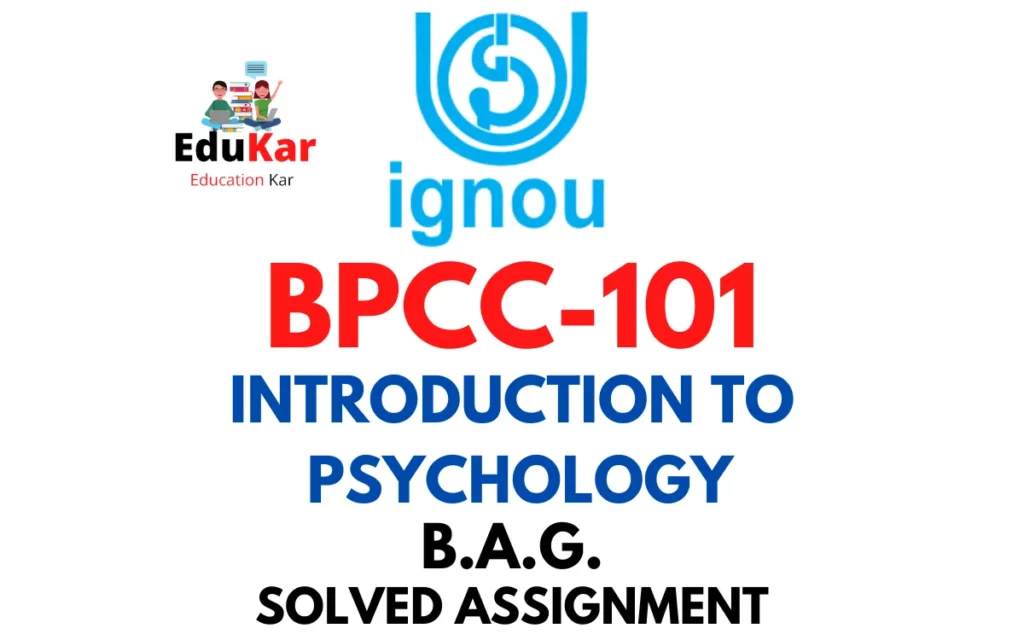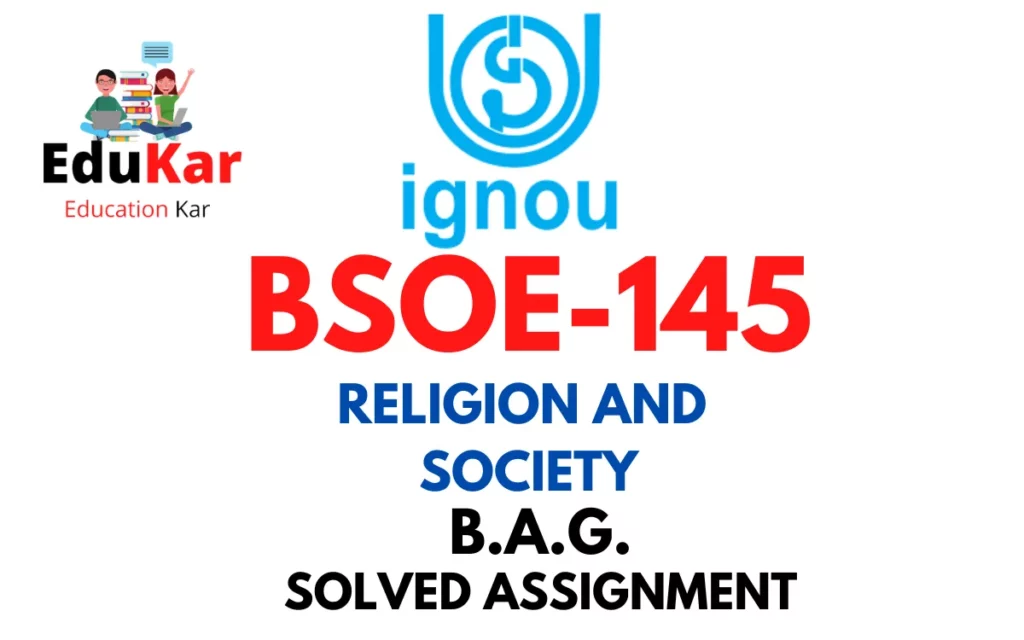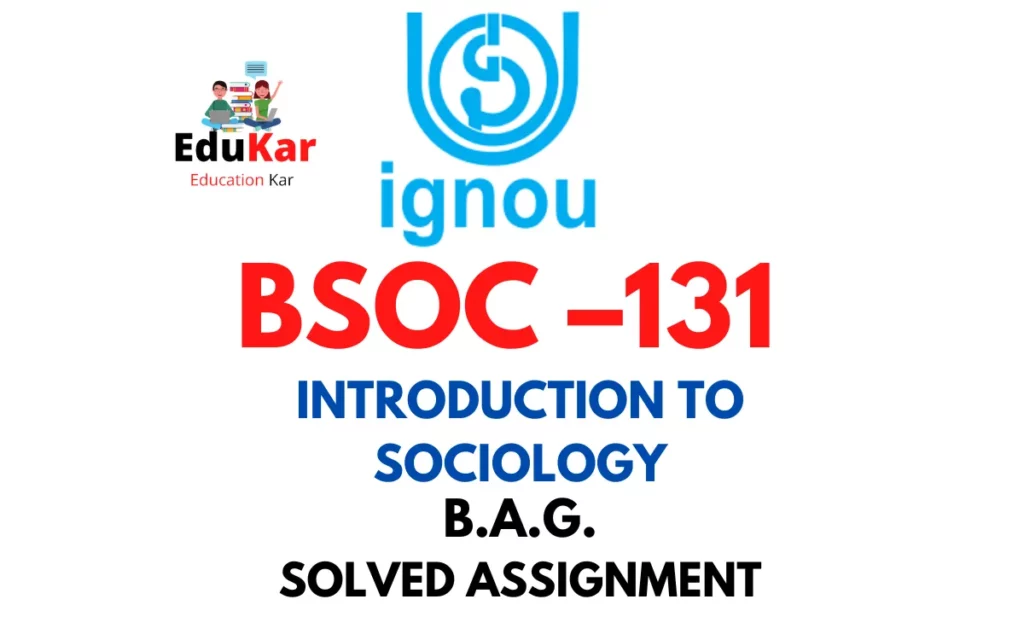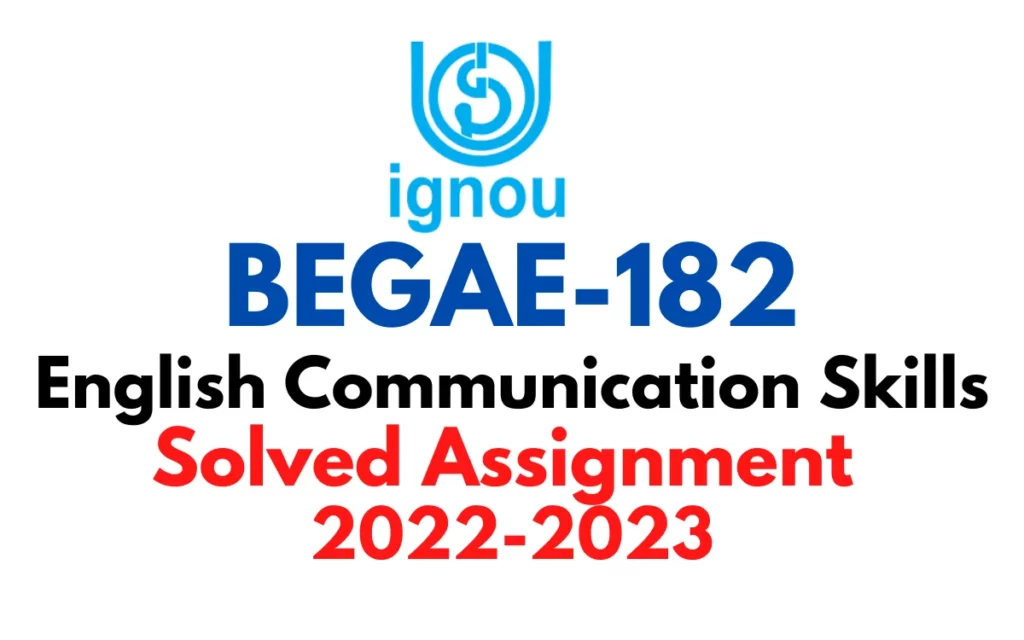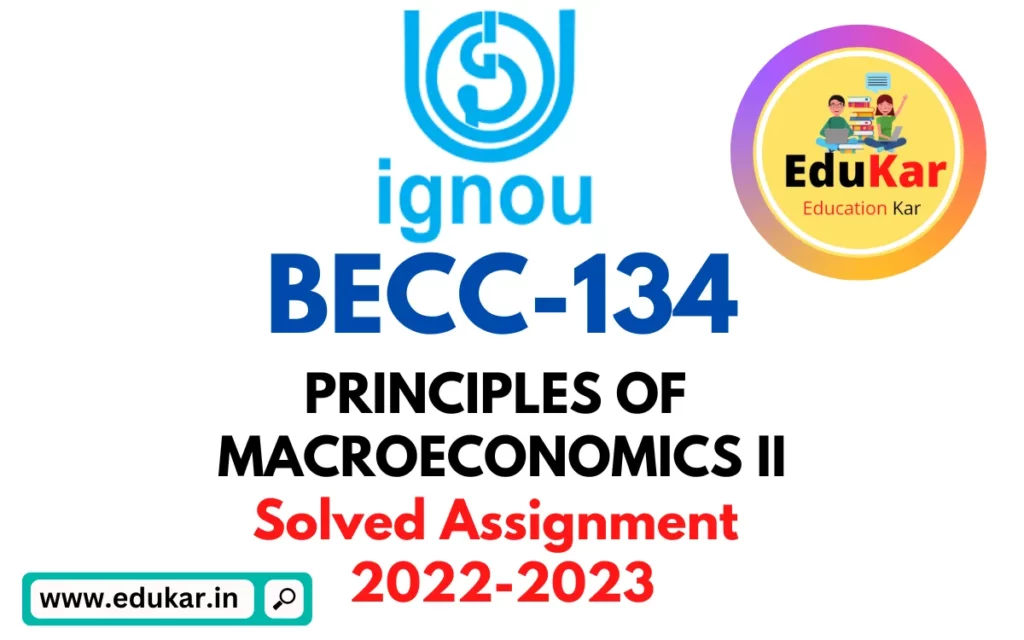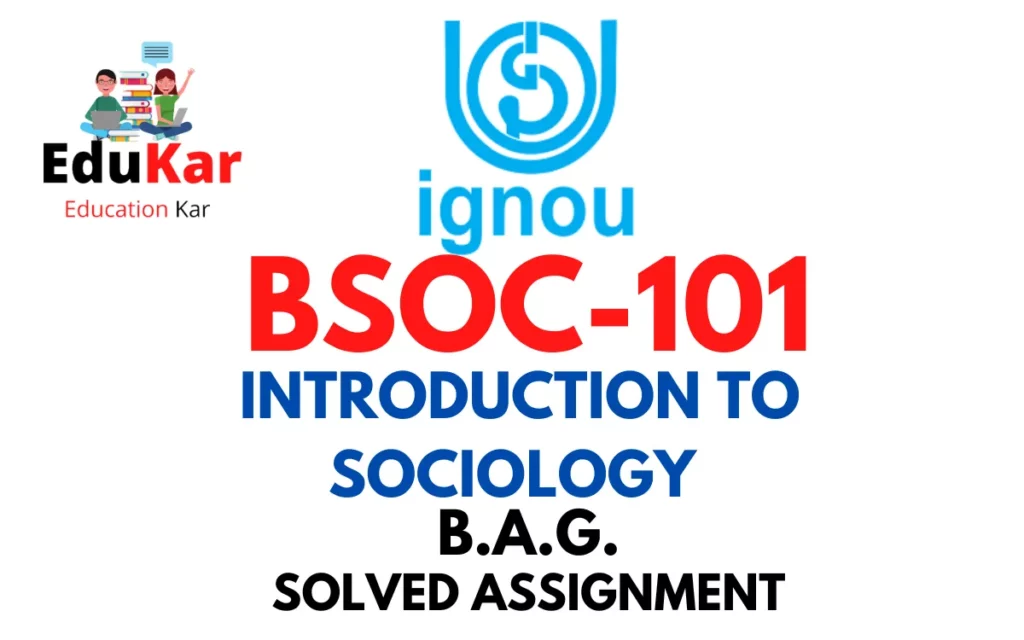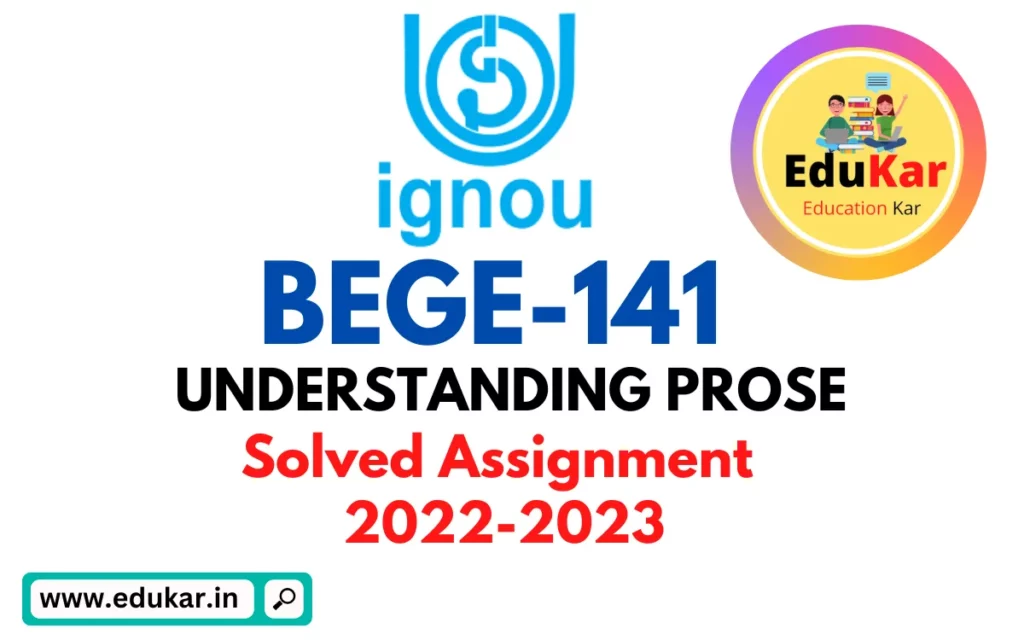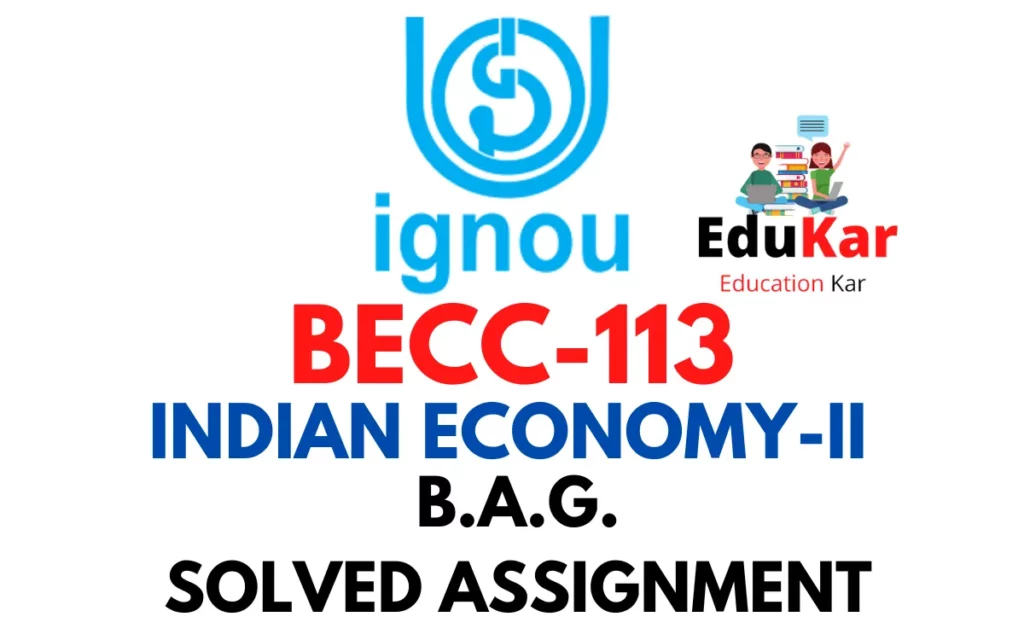Contents
- 1 Section-A
- 2 Answer the following questions in about 500 words each.
- 3 1. Explain the various components of a computer. Also differentiate between system software and application software by giving examples.
- 4 2. What do you mean by Open educational resources (OERs)? How are OERs developed?
- 5 Section-B
- 6 Answers the following questions in about 250 words each.
- 7 3. Discuss the instructional delivery in Open and Distance Learning (ODL).
- 8 4. Discuss the role of ICTs in lifelong learning by citing suitable examples.
- 9 5. Explain the ADDIE model of instructional design.
- 10 6. Explain the steps followed in the development of video programmes.
- 11 Section-C
- 12 Answer the following questions in about 125 words each.
- 13 7. Discuss the factors influencing ICT integration.
- 14 8. What do you mean by learning analytics? List a few ICT tools used for learning analytics.
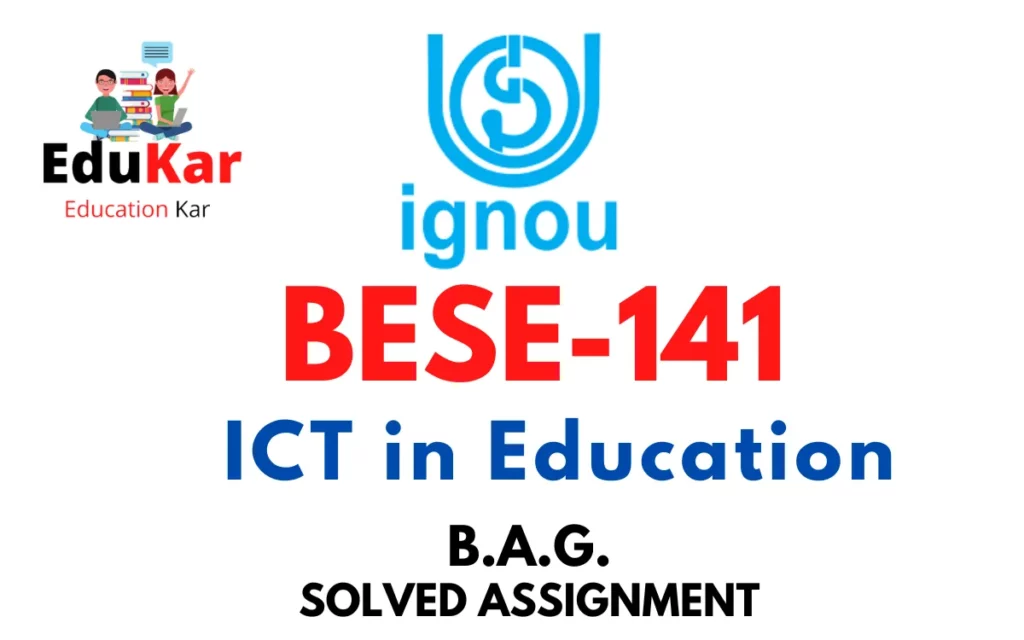
| Title | BESE-141: IGNOU BAG Solved Assignment 2022-2023 |
| University | IGNOU |
| Degree | Bachelor Degree Programme |
| Course Code | BESE-141 |
| Course Name | ICT in Education |
| Programme Name | Bachelor of Arts (General) |
| Programme Code | BAG |
| Total Marks | 100 |
| Year | 2022-2023 |
| Language | English |
| Assignment Code | BESE-141 /TMA /July 2022 and January 2023 |
| Assignment PDF | Click Here |
| Last Date for Submission of Assignment: | For June Examination: 31st April For December Examination: 30th September |
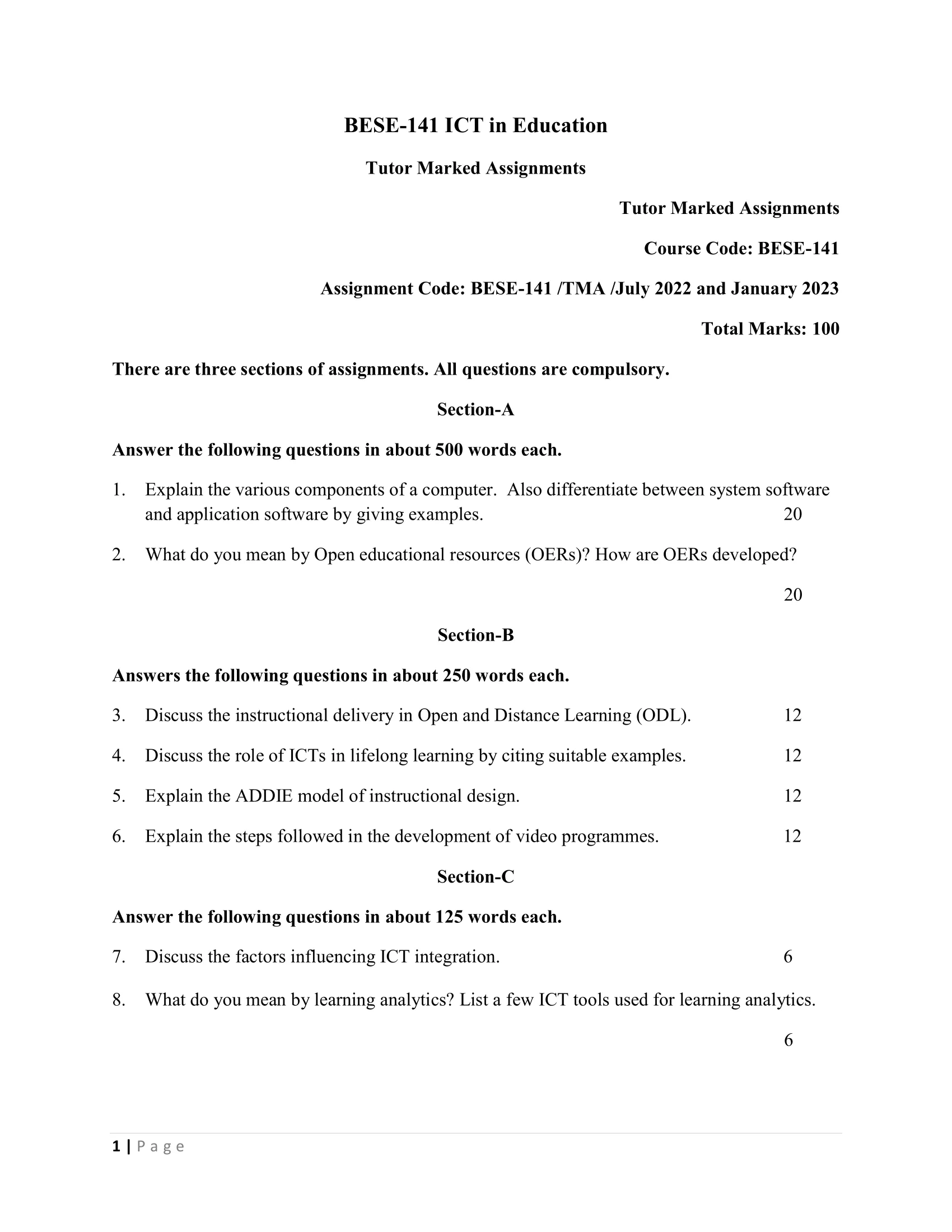
Section-A
Answer the following questions in about 500 words each.
1. Explain the various components of a computer. Also differentiate between system software and application software by giving examples.
Ans: A computer is an electronic device that is capable of accepting input, processing it, and providing output as a result. The following are the various components of a computer:
- Central Processing Unit (CPU): This is the brain of the computer, responsible for processing data and executing instructions. It contains the control unit, the arithmetic and logic unit, and registers.
- Random Access Memory (RAM): This is the temporary storage area for data and instructions that are currently being used by the CPU. RAM is volatile, which means that the data is lost when the computer is turned off.
- Read-Only Memory (ROM): This is a type of memory that contains the computer’s firmware, which is responsible for booting up the system and providing the basic input/output functions.
- Input devices: These are devices that allow the user to provide input to the computer, such as keyboards, mice, scanners, and microphones.
- Output devices: These are devices that allow the computer to provide output to the user, such as monitors, printers, and speakers.
- Storage devices: These are devices that are used to store data and instructions, such as hard disk drives, solid-state drives, and flash drives.
- Motherboard: This is the main circuit board that connects all the components of the computer together.
System software and application software are the two main types of software that run on a computer. System software refers to the programs that are responsible for controlling the computer’s hardware and providing a platform for other software to run on. Some examples of system software include:
- Operating systems: These are the programs that manage the computer’s resources, such as memory, storage, and processing power. Examples of operating systems include Windows, macOS, and Linux.
- Device drivers: These are programs that allow the operating system to communicate with hardware devices, such as printers, scanners, and cameras.
- Utility programs: These are programs that perform tasks such as disk cleanup, system maintenance, and security scans.
Application software, on the other hand, refers to programs that are designed for specific tasks or purposes, such as word processing, photo editing, and web browsing. Some examples of application software include:
- Microsoft Word: This is a word processing program that allows users to create, edit, and format text documents.
- Adobe Photoshop: This is a photo editing program that allows users to manipulate images, such as resizing, cropping, and adjusting colors.
- Google Chrome: This is a web browser that allows users to access and view websites on the internet.
2. What do you mean by Open educational resources (OERs)? How are OERs developed?
Ans: Open Educational Resources (OERs) are educational materials that are freely available to educators and learners for use, revision, and redistribution. OERs can include digital textbooks, lesson plans, quizzes, syllabi, videos, and other educational materials that are available online, typically under a Creative Commons license, which allows for the sharing, remixing, and reuse of the content. OERs are designed to provide more flexible, affordable, and accessible educational opportunities for learners and educators.
OERs are developed by a wide range of individuals and organizations, including educators, instructional designers, subject matter experts, and other professionals. OER development typically involves several stages, including planning, creating, publishing, and distributing the resources.
Planning: The first step in developing an OER is to identify the educational need or problem that the resource is intended to address. This may involve conducting research, analyzing existing resources, and consulting with educators and other stakeholders to determine the scope and purpose of the OER.
Creating: Once the need and purpose of the OER have been established, the next step is to create the content. This may involve developing text, graphics, multimedia, or interactive elements, depending on the nature of the resource. OER creators may use a variety of tools and software, including open-source platforms such as WordPress, Omeka, or PressBooks, to develop the content.
Publishing: Once the OER content has been created, the next step is to publish it online. This typically involves hosting the OER on a website, such as an institutional repository or an OER repository, and making it available for download or online access. OER creators may use a variety of platforms to publish their work, including online publishing tools and content management systems.
Distributing: After the OER has been published, the final step is to distribute it to learners and educators. OERs may be promoted through social media, email lists, or other channels to reach potential users. Many OERs are also shared through OER repositories, such as the Open Textbook Library, OER Commons, or MERLOT, which provide a centralized location for finding and accessing OERs.
Overall, OERs are developed in a collaborative, participatory, and iterative process that involves educators, learners, and other stakeholders. OERs are designed to provide more flexible, affordable, and accessible educational opportunities for all learners, regardless of their background, location, or financial resources. By making educational resources openly available, OERs have the potential to transform the way education is delivered and accessed, and to promote lifelong learning and knowledge-sharing.
Section-B
Answers the following questions in about 250 words each.
3. Discuss the instructional delivery in Open and Distance Learning (ODL).
Ans: Open and Distance Learning (ODL) is a form of education that provides learners with the opportunity to study at their own pace, time and location. In ODL, instructional delivery is typically done through various modes of delivery, including print materials, audio and video recordings, online resources, teleconferencing, and face-to-face interactions.
Print materials: One of the most common modes of delivery in ODL is through printed materials such as textbooks, manuals, and study guides. These materials provide learners with the necessary information and knowledge to complete their studies.
Audio and video recordings: Audio and video recordings are often used to supplement printed materials. They provide learners with an alternative way to engage with the material, and can also be used to provide additional explanations, case studies, or expert opinions.
Online resources: With the development of the internet and digital technologies, online resources have become a popular mode of delivery in ODL. These resources can include web-based courses, online assessments, and multimedia materials such as animations, videos, and simulations.
Teleconferencing: Teleconferencing allows learners and instructors to interact with each other in real-time, regardless of their physical location. Teleconferencing can be done through audio or video conferencing, and can include live lectures, discussions, and question-and-answer sessions.
Face-to-face interactions: Even though ODL is primarily delivered through distance means, face-to-face interactions can still play a significant role in instructional delivery. In some cases, learners may need to attend occasional face-to-face sessions for practical work, lab experiments, or field trips.
4. Discuss the role of ICTs in lifelong learning by citing suitable examples.
Ans: Information and Communication Technologies (ICTs) have revolutionized lifelong learning by providing learners with a range of tools and resources to enhance their learning experiences. ICTs offer several advantages, including greater access to learning materials, improved collaboration and communication among learners, and enhanced learning outcomes. Here are some examples of the role of ICTs in lifelong learning:
- Massive Open Online Courses (MOOCs): MOOCs are online courses that are designed to be accessed by anyone, anywhere, at any time. These courses are delivered through various platforms such as Coursera, EdX, and Udacity. MOOCs are usually free or low-cost and offer a wide range of courses in various fields. Learners can access course materials, videos, discussion forums, and quizzes, among other resources, at their convenience.
- E-Learning platforms: E-learning platforms such as Khan Academy, Lynda, and Skillshare provide learners with access to a vast range of online courses and resources. These platforms offer courses in various fields, such as computer science, business, and design. The learners can access the courses anytime and anywhere, and they usually include videos, quizzes, and assignments.
- Virtual and Augmented Reality: Virtual and augmented reality technologies provide learners with immersive experiences that enhance their learning outcomes. For example, Virtual Reality can be used to simulate dangerous situations that could not be replicated in a real-world setting, such as flight simulations or surgery procedures. Augmented Reality can be used to overlay digital information on top of real-world objects to enhance the learning experience.
- Social media: Social media platforms such as Twitter, Facebook, and LinkedIn offer opportunities for learners to connect with like-minded individuals and experts in their field. Learners can join online communities, participate in discussions, and share resources with other learners.
5. Explain the ADDIE model of instructional design.
Ans: The ADDIE model is a systematic approach to instructional design, widely used in the field of education and training. The acronym ADDIE stands for Analysis, Design, Development, Implementation, and Evaluation. Each of the five phases represents a different stage in the instructional design process.
- Analysis: The first phase of the ADDIE model involves analyzing the needs and goals of the learners and the organization. This phase includes conducting a needs assessment, analyzing the target audience, and defining the learning objectives.
- Design: The design phase involves creating a blueprint for the instruction. In this phase, instructional designers create a plan for the course, including determining the instructional strategies, selecting the appropriate media, and designing the assessment and evaluation methods.
- Development: The development phase involves creating the actual instructional materials based on the design blueprint. This phase includes developing the course content, creating the course structure, and selecting the appropriate media.
- Implementation: The implementation phase involves delivering the course to the learners. This phase includes delivering the content to the learners, managing the learning environment, and providing support to the learners.
- Evaluation: The final phase of the ADDIE model involves evaluating the effectiveness of the instruction. This phase includes evaluating the outcomes of the instruction, gathering feedback from the learners and the instructors, and making any necessary adjustments.
6. Explain the steps followed in the development of video programmes.
Ans: The development of video programmes typically involves several stages, including planning, pre-production, production, post-production, and distribution. Here are the steps typically followed in the development of video programmes:
- Planning: The first step is to identify the purpose, target audience, and message of the video programme. This involves conducting research and analyzing the needs of the target audience. A production plan is then created, which includes a script, storyboard, budget, and schedule.
- Pre-Production: Once the planning is complete, the next step is pre-production. This involves finalizing the script, selecting locations, hiring talent, and preparing equipment. During pre-production, the production team also conducts rehearsals and tests to ensure everything runs smoothly during filming.
- Production: The production stage involves filming the video. This involves setting up the equipment, lighting, and sound, and filming the scenes according to the script and storyboard. The production team captures the necessary footage, including interviews, b-roll footage, and any other necessary content.
- Post-Production: The post-production stage involves editing the video. This includes selecting the best footage, arranging it in the desired order, adding music and sound effects, and incorporating any special effects or animations. The video is then color-corrected, and the audio is mixed and mastered to create the final product.
- Distribution: Once the video is complete, the final step is distribution. This involves selecting a platform to distribute the video, such as YouTube or Vimeo. The video is then uploaded to the platform, and the necessary metadata, such as title, description, and tags, is added. The video is then promoted through various channels, such as social media and email, to reach the target audience.
Section-C
Answer the following questions in about 125 words each.
7. Discuss the factors influencing ICT integration.
Ans: There are many factors that influence the integration of ICT (Information and Communication Technology) in different contexts, such as education, business, and government. Some of the key factors include access to technology and infrastructure, availability of resources and funding, level of ICT skills and knowledge among users, support from stakeholders and leadership, cultural and social factors, and alignment with educational and organizational goals. Additionally, the availability and quality of digital content and tools, security and privacy concerns, and the overall technological readiness of the community are also important factors to consider. Effective ICT integration requires careful planning and attention to these key factors.
8. What do you mean by learning analytics? List a few ICT tools used for learning analytics.
Ans: Learning analytics is the process of using data analysis techniques and educational research to improve teaching and learning outcomes. Learning analytics tools use data from learning management systems, student information systems, and other sources to track and analyze student behavior, performance, and engagement in order to identify patterns and trends, and provide insights into student learning.
Some ICT tools commonly used for learning analytics include:
- Learning Management Systems (LMS) such as Blackboard, Canvas, and Moodle
- Student Information Systems (SIS) such as PowerSchool, Infinite Campus, and Skyward
- Data visualization tools such as Tableau and Google Data Studio
- Predictive modeling and machine learning tools such as IBM Watson Analytics and RapidMiner
- Social network analysis tools such as NodeXL and Gephi.
How to Download BESE-141 Solved Assignment?
You can download it from the www.edukar.in, they have a big database for all the IGNOU solved assignments.
Is the BESE-141 Solved Assignment Free?
Yes this is absolutely free to download the solved assignment from www.edukar.in
What is the last submission date for BESE-141 Solved Assignment?
For June Examination: 31st April, For December Examination: 30th October

